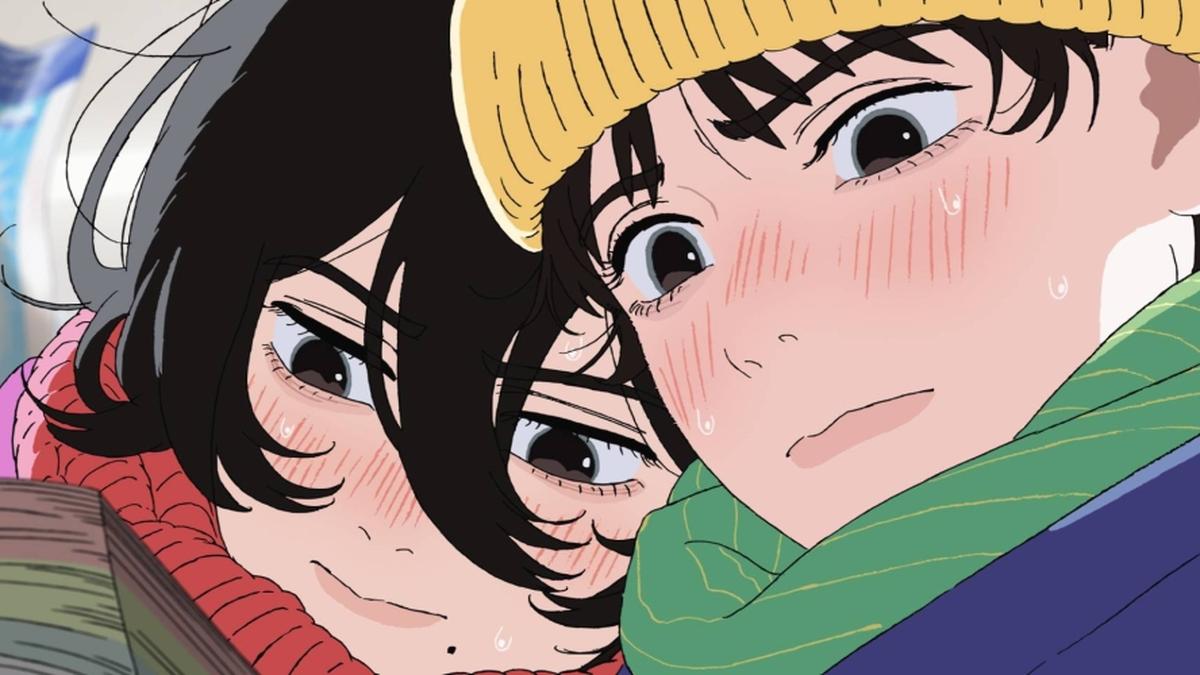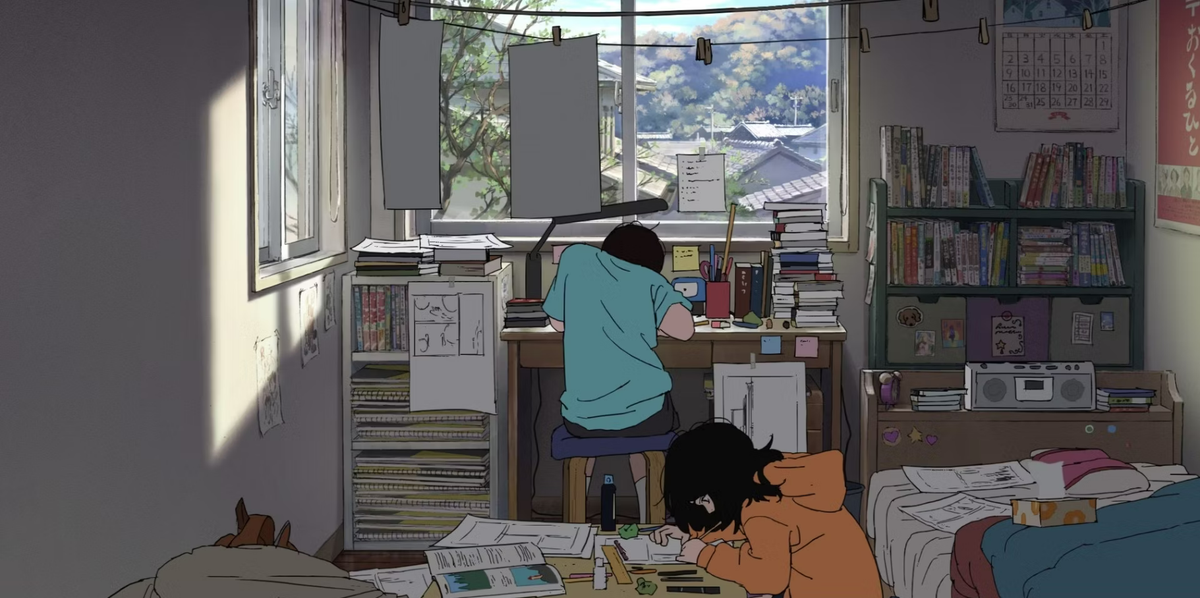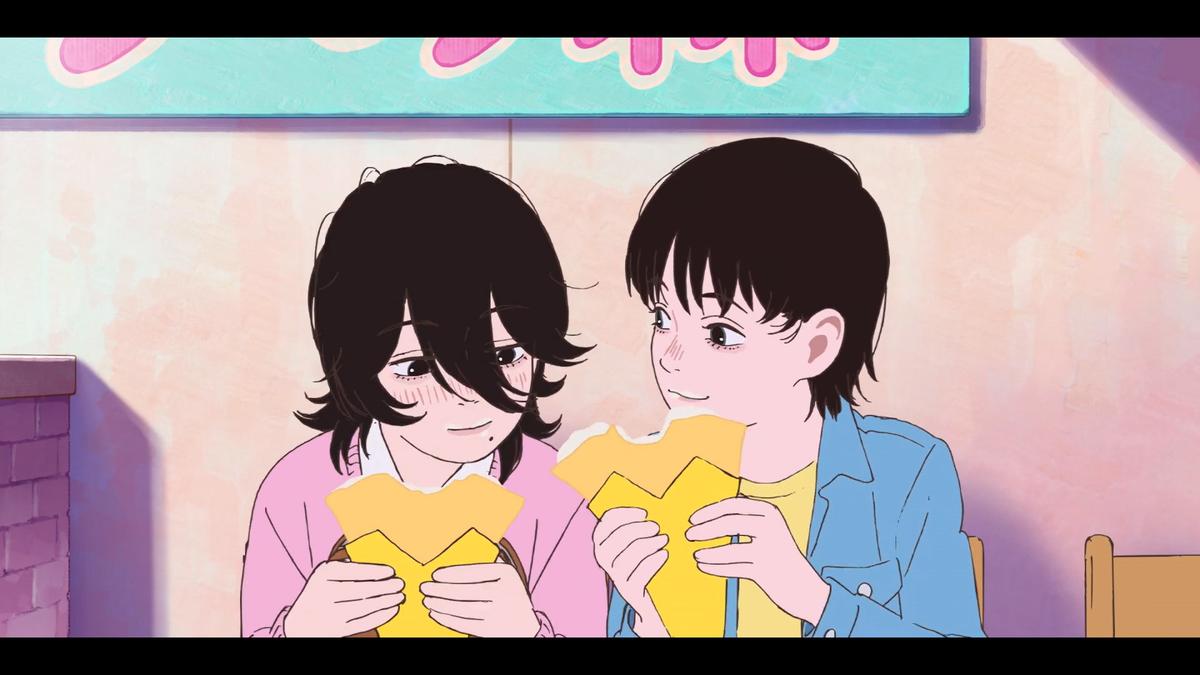- October 25, 2024
‘Look Back’ movie review: Tatsuki Fujimoto’s poignant meta-manga is a stirring tribute to creation

Look Back, adapted from Chainsaw Man-mangaka, Tatsuki Fujimoto’s one-shot manga and shaped by director Kiyotaka Oshiyama, is 53 minutes of fevered artistry packed into a slow-simmering emotional odyssey. Like watching the first brushstrokes dappled on an empty canvas, this story about two young artists is meditative, powerful and packs more than a few surprises.
Fujino and Kyomoto — middle schoolers orbiting wildly different stars on the artistic spectrum — are unlikely foils, each a spirited half of Fujimoto’s own psyche, blended as cleverly as their syllables imply.
Look Back (Japanese)
Director: Kiyotaka Oshiyama
Cast: Yuumi Kawai, Mizuki Yoshida
Runtime: 57 minutes
Storyline: Fujino and Kyomoto couldn’t be more different, yet their shared passion for drawing manga unites these two small-town girls
Fujino is the bold, brash striver, the comic’s equivalent of an influencer — always chasing the thrill of publication and audience applause, no matter the cost to her mental bandwidth. Kyomoto, by contrast, is a reclusive master of form, creating painstakingly detailed art that could sink under the weight of its perfectionism if not tethered to an emotional thread. Together, they personify two classic artist archetypes: one driven by external validation, the other consumed by inner precision.
For a film grounded in animation, Look Back feels remarkably live-action in its approach. Instead of hyper-stylized cuts or frenetic energy that’s textbook Fujimoto, it lets scenes breathe, linger, and swell like a piece of classical music — each frame a slow, controlled exhale. When Fujino and Kyomoto first meet, it’s not in a flashy shounen rivalry but a quiet, awkward exchange that tips toward mutual respect.

A still from ‘Look Back’
| Photo Credit:
GKids
Oshiyama’s camera (if we can call it that) barely moves, letting the scene unfold with a grounded stillness that would feel just as comfortable in a Linklater film. A level of restraint of this kind is a daring choice in a medium known for excess, and it pays off spectacularly, allowing us to feel not only the frenzied rush of creation but the slipping weight of time itself.
And that slipping sensation is pivotal, as Look Back eventually dips into tragedy with astonishing tact. Without giving away too much, Fujimoto infuses the story with a barely-there biographical touch, tying in a jarring, horrific event that nearly ruptures the tenderness of this world. Yet, within the film’s spare framework, it is exactly this kind of overwhelming crisis that seems appropriate and points towards the film’s existential thesis: in the end, all art-making might just be a frail attempt to anchor oneself in the flux of life. Art doesn’t stop time, but it does let us look back — however fleetingly — at the people and moments that shaped us.

The shadow of the real-life Kyoto Animation arson hovers over the second half to remind us of the fragility of the lives dedicated to the arduous labour of creation. This serves as an invitation to wrestle with the values of art versus life itself. Is it all worth it — the endless, painstaking hours, the self-isolation, the gruelling critique? Look Back suggests that, perhaps, what matters most is not the work itself, but the moments of shared passion and fleeting joys that dot an artist’s journey. In Fujino’s last look back at Kyomoto, we feel the ache of loss and the beauty of having been seen and understood by another, even if just for a moment.

A still from ‘Look Back’
| Photo Credit:
GKids
Stylistically, the film is as much a celebration of raw, unpolished lines as it is of refined frames. Fujino’s and Kyomoto’s character designs hold a sketch-like quality, with rough outlines that feel almost unfinished, capturing the tremor of hand-drawn imperfection.
The progression is a masterclass in visual storytelling. Instead of endless dialogue, Look Back largely communicates in silences and carefully observed moments — Kyomoto’s wide-eyed blush, the muted drone of Fujino’s restless foot-tapping, or the flicker of a manga page turning — that linger with breathtaking efficacy. Music plays a critical role here too, as Haruka Nakamura’s score swells and recedes with hues of longing, determination, and inevitable grief.

Watching Fujino’s initially triumphant posture degrade into a hunched obsession as she pours herself into improving her skills, or seeing Kyomoto lost in the exquisite detail of her work, feels visceral and real. You can almost see the strain in their wrists, feel the desk cluttered with eraser shavings, and smell the faint scent of pencil graphite. The animation’s tactility brings out the delirium and despair of the creative process in a way few films can match.
Despite its modest runtime, Look Back wrestles with a kind of massive, universal question: what drives us to create? Is it the lure of applause or the simple act of shaping something beautiful? Oshiyama and Fujimoto dodge any easy answers and offer up instead a nudge toward self-reflection for anyone who’s ever scrawled a poem, snapped a photograph, or even just doodled on the margins of a notebook. Sometimes, looking back is a step toward letting go.
Look Back is currently running in theatres and is slated for a November 7 streaming release on Prime Video
Published – October 25, 2024 04:57 pm IST




